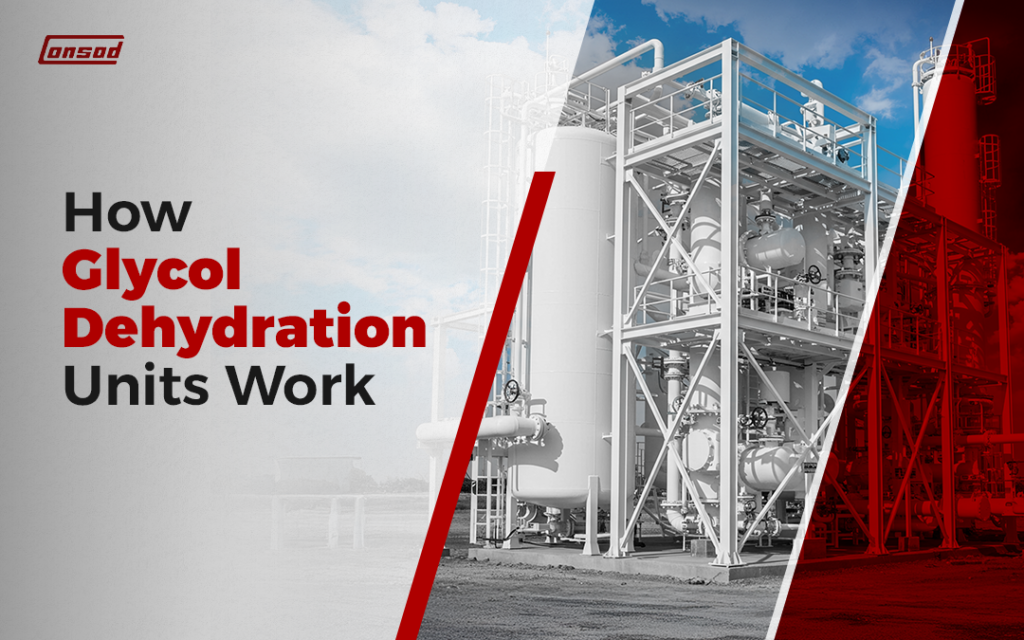In natural gas processing, removing water vapor is a critical step to ensure safety, efficiency, and product quality. One of the most widely used methods for this is glycol dehydration. In this blog, we’ll take a closer look at how Dehydration Units, specifically glycol-based systems, operate in a step-by-step process—and why they’re essential in gas treatment facilities.
What Are Dehydration Units?
Dehydration Units are systems designed to remove moisture from natural gas streams. Moisture can lead to hydrate formation, pipeline corrosion, and reduced efficiency in downstream equipment. Glycol dehydration is the most common method used in the field, thanks to its simplicity, cost-effectiveness, and high efficiency.
Why Use Glycol in Dehydration Units?
Glycol—typically Triethylene Glycol (TEG)—has a strong affinity for water, making it ideal for absorbing moisture from wet gas. When natural gas passes through the glycol, water is absorbed and later removed through a regeneration process, allowing the glycol to be reused.
Step-by-Step Breakdown: How Glycol Dehydration Units Work
Let’s walk through the process that takes place inside glycol-based Dehydration Units:
1. Gas Inlet and Separation
The process begins as wet natural gas enters the inlet separator, where free liquids like water and hydrocarbons are separated from the gas stream. This step prevents excessive liquid from entering the contactor tower and overwhelming the glycol system.
2. Gas-Glycol Contactor (Absorber Tower)
In the absorber (or contactor) tower, the natural gas flows upward while lean (dry) glycol flows downward. The gas and glycol contact each other in a counter-current flow, typically over trays or packing material, which increases the surface area for moisture absorption.
Here, the glycol absorbs water vapor from the gas, drying it to meet pipeline or process specifications.
3. Separation of Rich Glycol
The now water-rich glycol (rich glycol) exits the bottom of the absorber tower. Before it’s regenerated, it’s sent through a flash tank to remove any entrained hydrocarbons and gas.
4. Glycol Regeneration
The rich glycol then flows into the reboiler system, where it’s heated to around 400°F (204°C). This process drives off the absorbed water vapor, leaving behind lean glycol that can be reused.
The water vapor is usually vented through a still column and cooled in a condenser, while the clean, lean glycol is pumped back into the system.
5. Cooling and Filtration
Before re-entering the absorber, the regenerated lean glycol is cooled and filtered to remove any impurities or degradation products. Maintaining glycol purity is essential for consistent dehydration performance and longer unit life.
Advantages of Glycol-Based Dehydration Units
Using glycol in Dehydration Units offers several key benefits:
- Effective water removal: Meets pipeline specs (dew point control).
- Reusable glycol: Lower operating costs.
- Simple operation: Easily maintained and scalable.
- Customizable: Can be designed for small or large gas flows.
- Environmentally adaptable: Works in both onshore and offshore environments.
Best Practices for Operating Dehydration Units
To get optimal performance from your glycol Dehydration Units, keep the following in mind:
- Monitor glycol temperature and pH regularly.
- Minimize glycol losses with proper sealing and maintenance.
- Remove hydrocarbon contamination to prevent glycol degradation.
- Optimize absorber pressure and contactor design for specific gas compositions.
- Use filters and flash tanks to keep glycol clean and efficient.
Conclusion
Glycol-based Dehydration Units play a vital role in the safe and efficient processing of natural gas. Understanding how they work helps operators and engineers maximize uptime, reduce costs, and ensure high-quality gas delivery. By following best practices and routine maintenance, these systems can deliver long-term, reliable dehydration performance in a wide range of applications.

